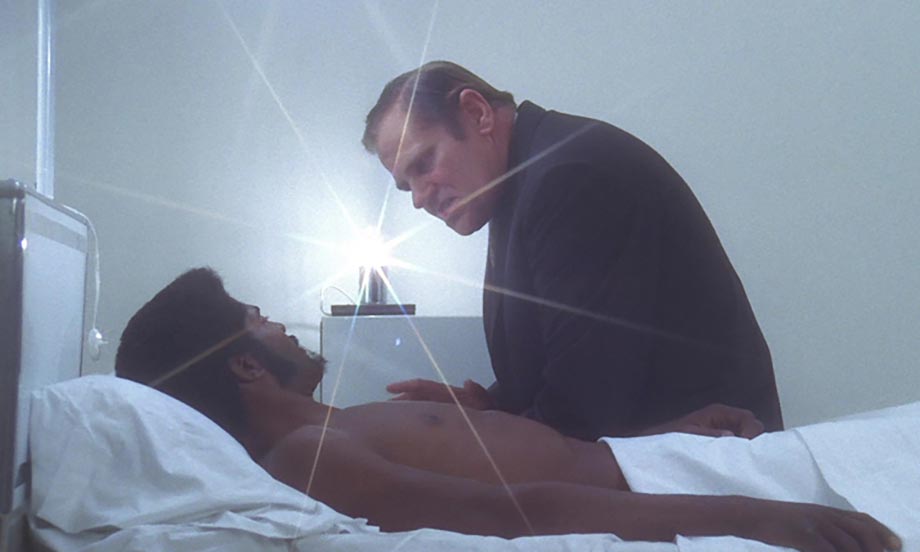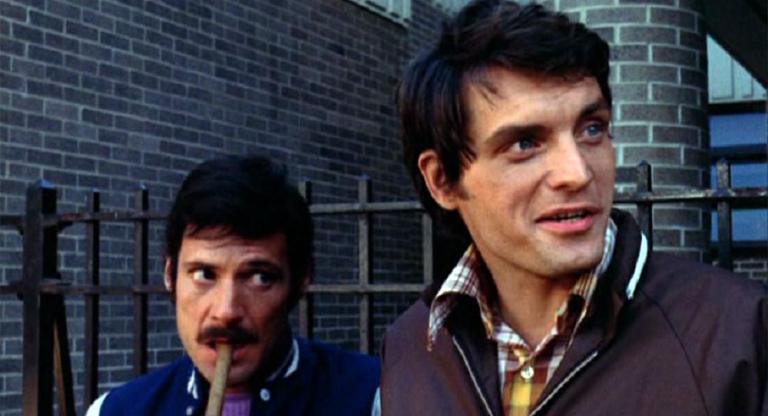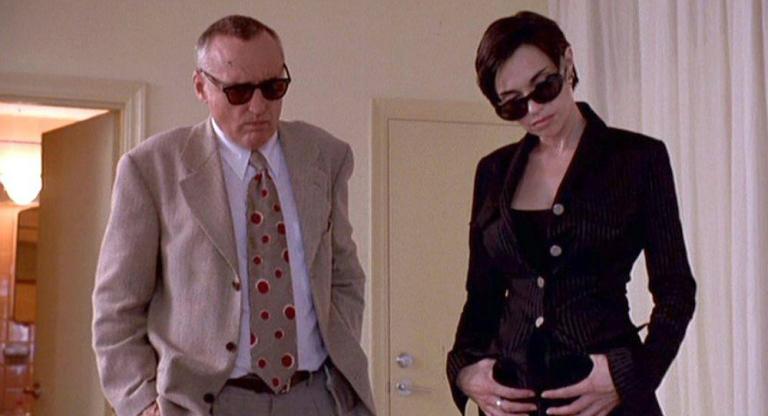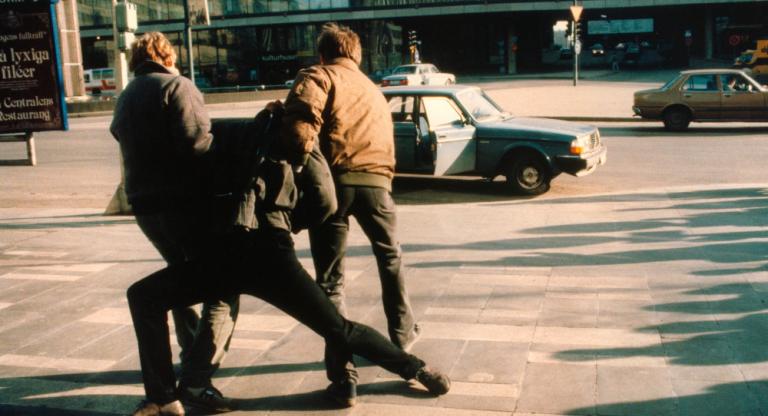Top of the Heap (1972) is a speculative elegy for one man’s squandered potential that itself laments the rich career its writer, director, and star Christopher St. John should’ve had. After the success of playing Black militant Ben Buford in Shaft (1971), Yale Repertory Theatre and Actors Studio alum St. John placed ads in the trades to finance his own project: “a contemporary black film that I must do.” Fifty years on, the timeliness and exigency of Top of the Heap is as arresting as the mud that sprays the camera’s lens in its opening scene.
St. John is George Lattimer, a weary cop in Washington, D.C., who’s once again overlooked for sergeant promotion. Absent at home, consumed by the job, he’s resented for his collusion with the state by the city’s Black community and leerily detested by white suspects and fellow officers both. No one understands him: not his affable partner Bobby (Leonard Kuras), his wife Viola (Florence St. Peter), or his bohemian girlfriend (Paula Kelly, credited as “Black Chick”). The closest Lattimer drifts toward compassion is with the retired officer he visits at an assisted-living facility; over swills of contraband bourbon, Tim (Patrick McVey)—whose precise relation to Lattimer is left vague, in keeping with the film’s instinct for restraint as well as flamboyance—mourns the way decrepitude and loneliness have foreshortened what remains of his life: “All I can do is dream.”
Dreaming is Top of the Heap’s premier concern and yet the seed of its commercial downfall: St. John recalled hearing MGM executive James Aubrey worry about the script, “We haven’t had too much luck with dreams.” As written, the film is punctuated by escapist visions in which Lattimer pictures himself a revered astronaut in a lacquered 2001-esque space station, but outer space isn’t far enough to elude the earthly news of his mother’s death; the only approaching celestial “voyage” on his itinerary is to her funeral in rural Alabama. In this dark substitution, the film reckons not only with systemic prejudice but the cosmic menace of aging and death—or rather, demonstrates Ruth Wilson Gilmore’s definition of racism as “the state-sanctioned or extralegal production and exploitation of group-differentiated vulnerability to premature death.”
Just five years prior, Melvin Van Peebles’s debut feature The Story of a Three-Day Pass (1967) likewise applied a kind of new-wave experimentalism to the subjectivity of a conflicted Black serviceman, prefiguring St. John’s Lattimer with American soldier Turner (Harry Baird) on leave in France. Turner’s fantasies imagine a country where the women are cheerier, the language barrier non-existent, and the people sympathetic and humane. “Captain” Lattimer’s psychedelic NASA press conference is similarly poignant in the modesty of its yearning: asked by reporters about his selection for the mission, Lattimer answers simply that he needed work, applied, and “after that, it was all very easy.”
One wonders if the marketability of Van Peebles’s follow-up Sweet Sweetback’s Baadasssss Song (1971) may have ironically helped sour St. John’s producers on accepting an invitation to screen Top of the Heap at Cannes—then seen as an outlier move that would undermine the film’s viability as sheer entertainment. With its gold sequins and wucka-wucka soundtrack, Top of the Heap is pleasingly conversant with the conventions of Blaxploitation cinema, but its surrealist phrases (particularly a fantasy of homecoming, to which the film’s grim conclusion ultimately returns) attest to the extent of St. John’s ambition and ability. “I think it’s possible to do something spiritual in film, something that’s uplifting,” he told the Los Angeles Times. That he never again got approved for liftoff is—as George Lattimer snarls by way of introduction—bullshit.
Top of the Heap screens February 18–24 at BAM.




